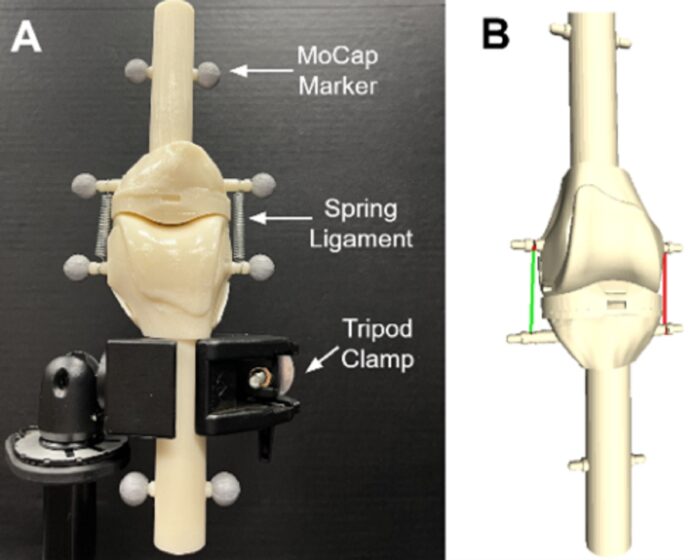In the United States, over 1 million total knee replacements (TKR) were performed in 2020, with 20% of patients reporting unhappiness with their TKR. Poor implant alignment and post-operative biomechanics are two major causes of patient unhappiness. Preoperative joint computational modeling may lower the incidence of incorrect implant placement. Caira Surgical has created a patented computational knee model to help surgeons with preoperative planning and improve implant alignment accuracy.
Aaron Henry, a doctorate candidate at Texas A&M University, worked with Caira Surgical, a surgical navigation and robotics provider, to create a computational knee model that can enhance implant alignment throughout knee replacement surgeries.
Henry’s study aimed to support Caira’s unique computational knee model, which can aid surgeons in precisely positioning implants during knee replacement operations. Approximately 20% of patients who underwent total knee replacement surgery in the U.S. in 2020 expressed unhappiness with the outcomes, citing everything from improper implant alignment to subpar biomechanics.
Previously, surgeons attempted to predict the optimal site based on their diagnosis of the ligament strain before implant placement. However, this procedure needed more adequate, as patients occasionally developed problems requiring extra surgery.
Henry’s study attempted to apply computer modeling to review an implant’s orientation for best accuracy and assess any potential misalignment before final implantation. He also did simulations to indicate how the implant would interact with the patient’s anatomy and to forecast specifics of post-surgery knee motion and any notable changes in mobility.
The initial validation of this modeling involved producing a physical 3D-printed knee model, which Henry compared to the computer model using motion capture. The comparison revealed that the computational model accurately predicted the physical model’s performance in the real world.
Robbins said, “This work with our partners at Caira provides an opportunity to impact many Americans who need joint replacements. Aaron’s work is laying important groundwork for significant improvements to clinical practice soon.”
In conclusion, Future work will involve anatomic validation with cadavers and incorporating non-linear properties of natural ligaments. This computational model could improve implant alignment accuracy, patient satisfaction, and outcomes with an expected increase in TKRs.
Journal Reference:
- Aaron Henry, Gordon Goodchild, et al.Experimental Validation of a Computational Knee Model of TKR Implant Placement. American Society of Mechanical Engineering Digital Collection. DOI: 10.1115/DMD2023-5598
